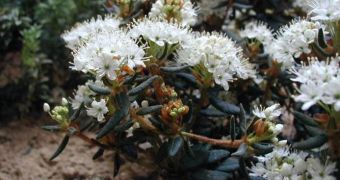Researchers in Scandinavia have recently found that a particular type of birch tree has learned the advantages of cooperation in order to put itself out of harm's way. It is apparently able to secret chemicals that are the signature of the neighboring marsh tea plant called Rhondodendron tomentosum, a feat, which allows it to employ the unique defense by “neighbor strategy.” Details of the new investigation appear in the March 10 issue of the respected scientific publication New Phytologist, AlphaGalileo reports.
The research team, which is based at the University of Eastern Finland, was led by expert professor Jarmo Holopainen. As with all interesting discoveries, this too was made by accident. The group was actually in the area monitoring the amount of dangerous chemicals that forests and peat lands were emitting, when the researchers noticed that the foliage of mountain birch seemed to produce the same chemical as the nearby rhododendron. Experts have known for a long time that various plants employ different types of odors in order to attract or fend off herbivores and insects, but this strategy was never seen before.
“It is well known that many plant species start to emit chemical compounds after damage by herbivores. In an earlier study we accessed the compounds emitted from mountain birch following Moth feeding damage and we found that some of the trees growing next to Rhododendron tomentosum also emitted residual amounts of the compounds ledene, ledol and palustrol. This resulted in the idea to experimentally test whether these sticky semivolatiles could actually protect neighboring birch trees from the attention of attacking herbivores such as feeding moths,” explains Agrifood Research Finland-based expert Dr. Sari Himanen, who was also a co-author of the new investigation.
“Based on experimentation in the field, in a natural habitat and in the laboratory, we discovered that a novel, potentially also ecologically meaningful effect for neighbor-emitted foliage-adsorbed semi-volatiles might take place in a boreal environment,” he adds. “Our results show that interactions between species through emissions are a good example of the ecological effects that need to be considered more from a plant community than from a individual plant point of view. Passive adsorption of compounds by a neighboring plant might be an important, but understudied, way for these compounds to act in a natural environment and could be an important factor in plant fitness and species distribution,” Himanen concludes.

 14 DAY TRIAL //
14 DAY TRIAL //